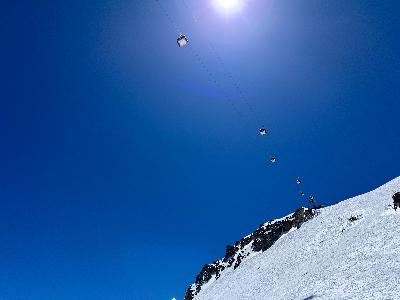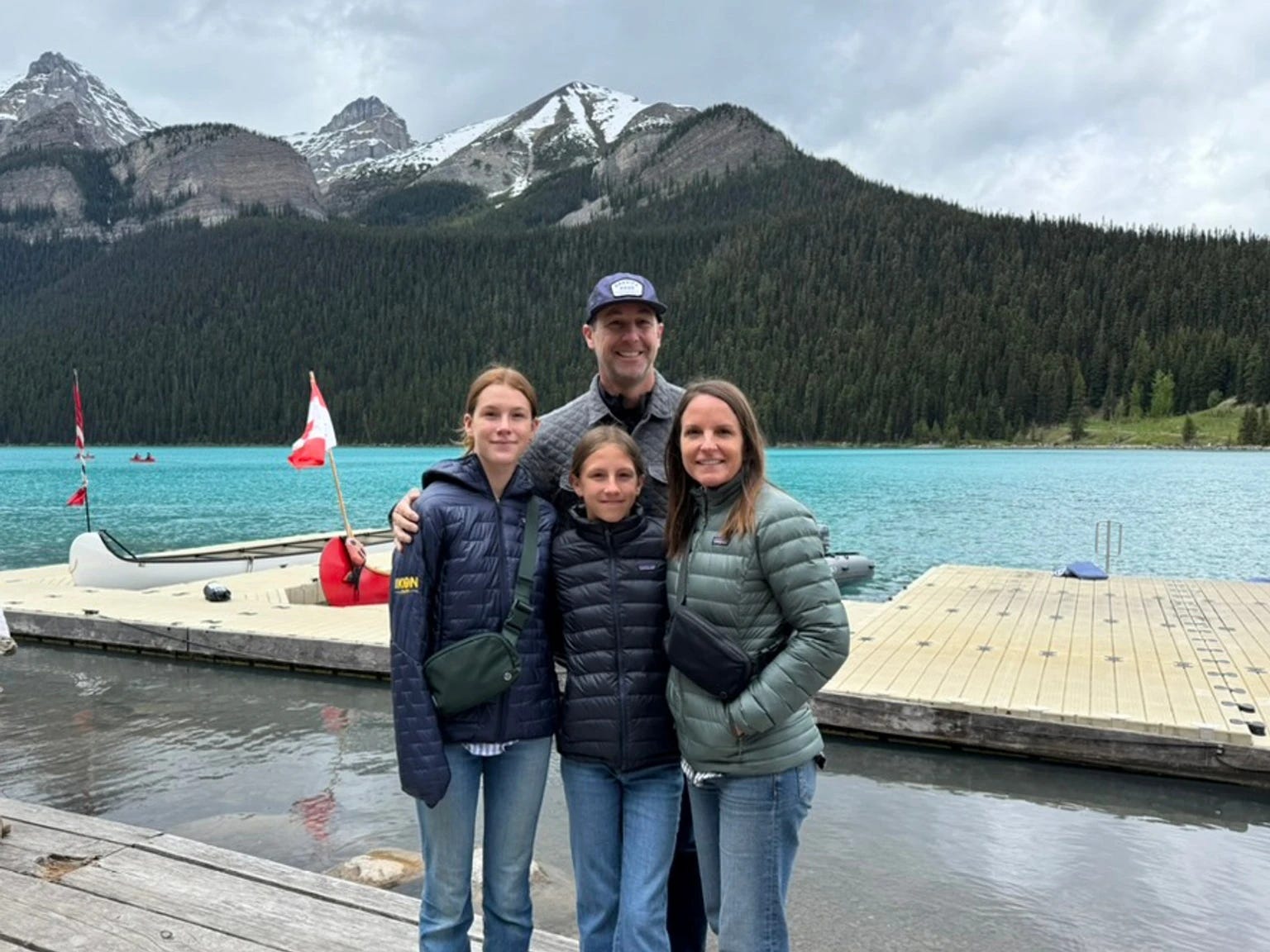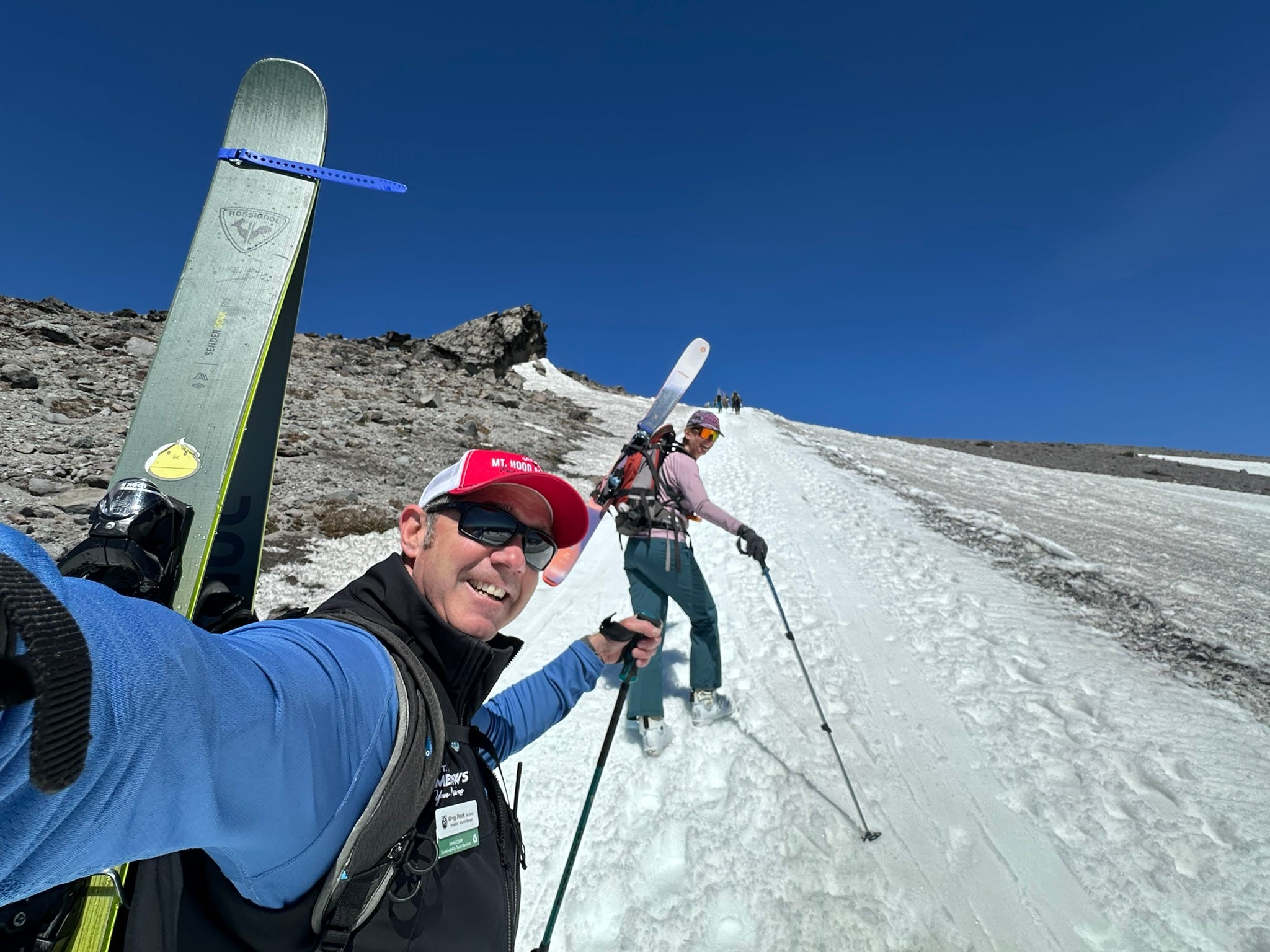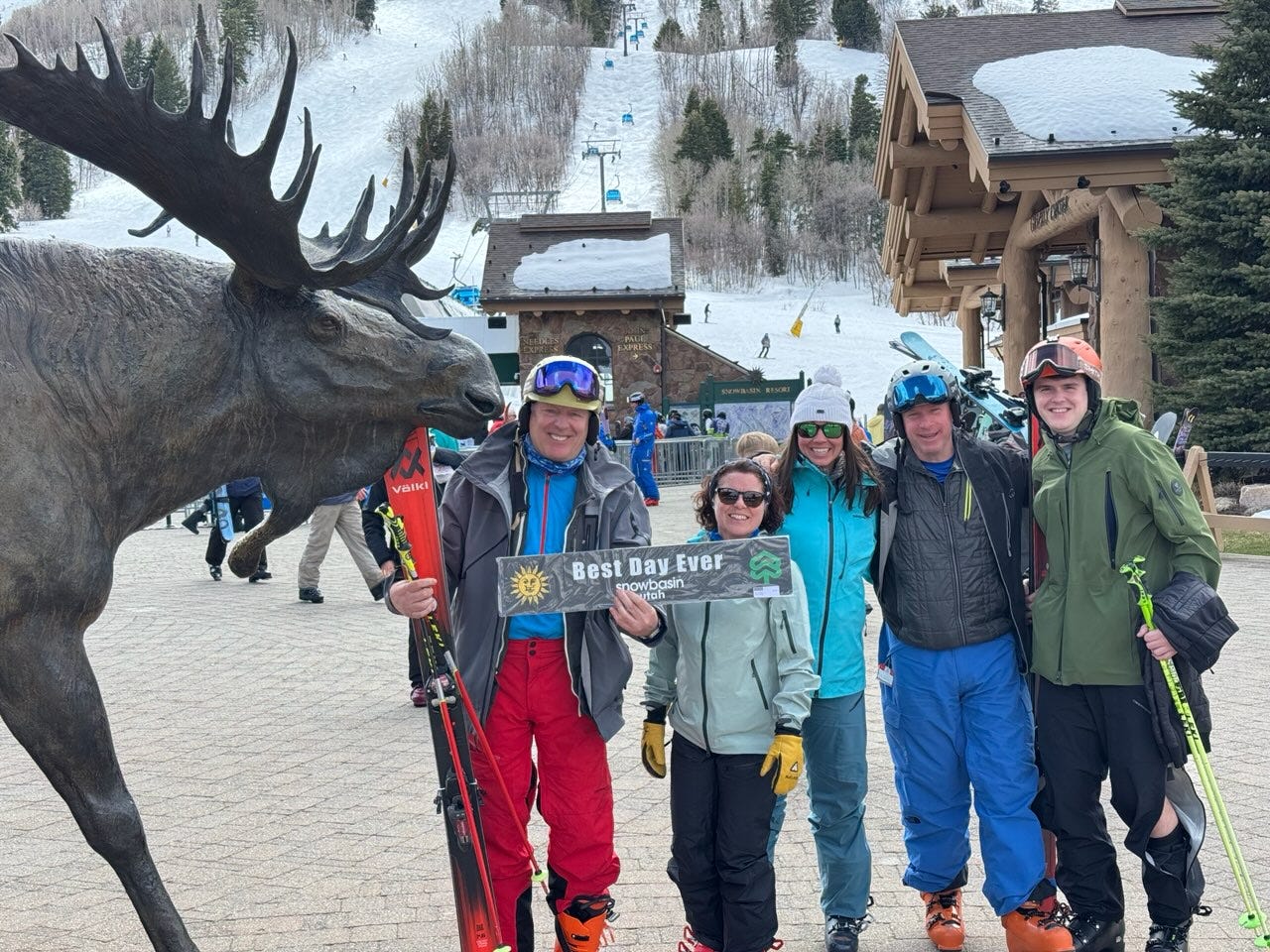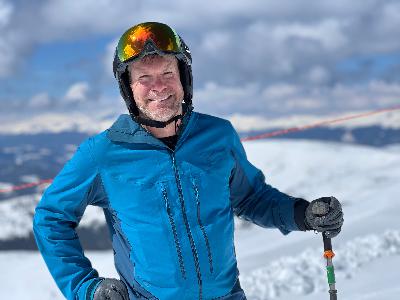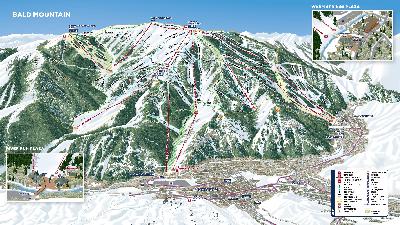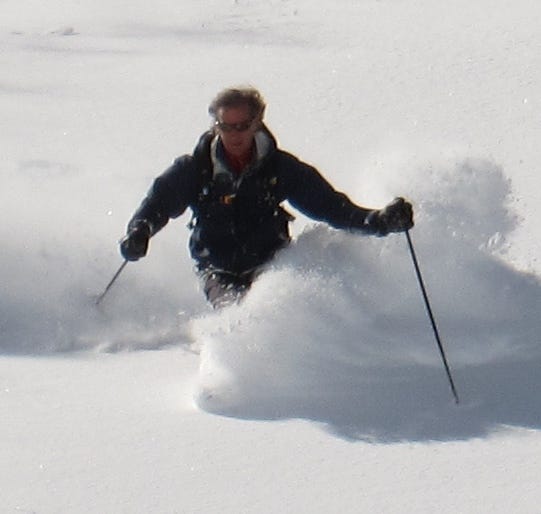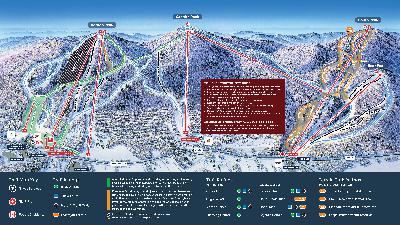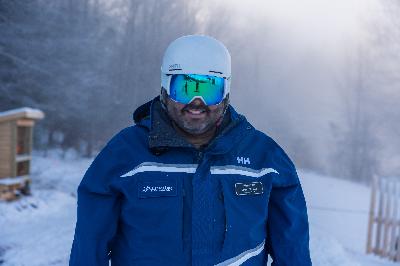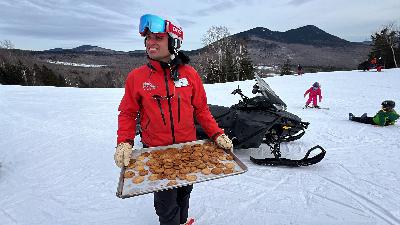Podcast #198: Mammoth & June Mountains President & Chief Operating Officer Eric Clark
Description
The Storm Skiing Journal and Podcast is a reader-supported publication. To receive new posts and to support independent ski journalism, please consider becoming a free or paid subscriber.
As of episode 198, you can now watch The Storm Skiing Podcast on YouTube. Please click over to follow the channel. The podcast will continue to stream on all audio platforms.
Who
Eric Clark, President and Chief Operating Officer of Mammoth and June Mountains, California
Recorded on
January 29, 2025
Why I interviewed him
Mammoth is ridiculous, improbable, outrageous. An impossible combination of unmixable things. SoCal vibes 8,000 feet in the sky and 250 miles north of the megalopolis. Rustic old-California alpine clapboard-and-Yan patina smeared with D-Line speed and Ikon energy. But nothing more implausible than this: 300 days of sunshine and 350 inches of snow in an average year. Some winters more: 715 inches two seasons ago, 618 in the 2016-17 campaign, 669 in 2010-11. Those are base-area totals. Nearly 900 inches stacked onto Mammoth’s summit during the 2022-23 ski season. The ski area opened on Nov. 5 and closed on Aug. 6, a 275-day campaign.
Below the paid subscriber jump: why Mammoth stands out even among giants, June’s J1 lift predates the evolution of plant life, Alterra’s investment machine, and more.
That’s nature, audacious and brash. Clouds tossed off the Pacific smashing into the continental crest. But it took a soul, hardy and ungovernable, to make Mammoth Mountain into a ski area for the masses. Dave McCoy, perhaps the greatest of the great generation of American ski resort founders, strung up and stapled together and tamed this wintertime kingdom over seven decades. Ropetows then T-bars then chairlifts all over. One of the finest lift systems anywhere. Chairs 1 through 25 stitching together a trail network sculpted and bulldozed and blasted from the monolithic mountain. A handcrafted playground animated as something wild, fierce, prehuman in its savage ever-down. McCoy, who lived to 104, is celebrated as a businessman, a visionary, and a human, but he was also, quietly, an artist.
Mammoth is not the largest ski area in America (ranking number nine), California (third behind Palisades and Heavenly), Alterra’s portfolio (third behind Palisades and Steamboat), or the U.S. Ikon Pass roster (fifth after Palisades, Big Sky, Bachelor, and Steamboat). But it may be America’s most beloved big ski resort, frantic and fascinating, an essential big-mountain gateway for 39 million Californians, an Ikon Pass icon and the spiritual home of Alterra Mountain Company. It’s impossible to imagine American skiing without Mammoth, just as it’s impossible to imagine baseball without the Yankees or Africa without elephants. To our national ski identity, Mammoth is an essential thing, like a heart to a human body, a part without which the whole function falls apart.
About Mammoth
Click here for a mountain stats overview
Owned by: Alterra Mountain Company, which also owns:
Located in: Mammoth Lakes, California
Year founded: 1953
Pass affiliations:
* Ikon Pass: unlimited, no blackouts
* Ikon Base Pass: unlimited, holiday blackouts
Closest neighboring ski areas: June Mountain – around half an hour if the roads are clear; to underscore the severity of the Sierra Nevada, China Peak sits just 28 miles southwest of Mammoth, but is a seven-hour, 450-mile drive away – in good weather.
Base elevation: 7,953 feet
Summit elevation: 11,053 feet
Vertical drop: 3,100 feet
Skiable acres: 3,500
Average annual snowfall: 350 inches
Trail count: 178 (13% easiest, 28% slightly difficult, 19% difficult, 25% very difficult, 15% extremely difficult)
Lift count: 25 (1 15-passenger gondola, 1 two-stage, eight-passenger gondola, 4 high-speed six-packs, 8 high-speed quads, 1 fixed-grip quad, 6 triples, 3 doubles, 1 Poma – view Lift Blog’s inventory of Mammoth’s lift fleet) – the ski area also runs some number of non-public carpets
About June
Click here for a mountain stats overview
Owned by: Alterra Mountain Company (see complete roster above)
Located in: June Lake, California
Year founded: 1963
Pass affiliations:
* Ikon Pass: unlimited, no blackouts
* Ikon Base Pass: unlimited, holiday blackouts
Closest neighboring ski areas: Mammoth Mountain – around half an hour if the roads are clear
Base elevation: 7,545 feet
Summit elevation: 10,090 feet
Vertical drop: 2,590 feet
Skiable acres: 1,500 acres
Average annual snowfall: 250 inches
Trail count: 41
Lift count: 7 (2 high-speed quads, 4 doubles, 1 carpet – view Lift Blog’s inventory of June Mountain’s lift fleet)
What we talked about
Mammoth’s new lift 1; D-Line six-packs; deciding which lift to replace on a mountain with dozens of them; how the new lifts 1 and 16 redistributed skier traffic around Mammoth; adios Yan detachables; the history behind Mammoth’s lift numbers; why upgrades to lifts 3 and 6 made more sense than replacements; the best lift system in America, and how to keep this massive fleet from falling apart; how Dave McCoy found and built Mammoth; retaining rowdy West Coast founder’s energy when a mountain goes Colorado corporate; old-time Colorado skiing; Mammoth Lakes in the short-term rental era; potential future Mammoth lift upgrades; a potentially transformative future for the Eagle lift and Village gondola; why Mammoth has no public carpets; Mammoth expansion potential; Mammoth’s baller parks culture, and what it takes to build and maintain their massive features; the potential of June Mountain; connecting to June’s base with snowmaking; why a J1 replacement has taken so long; kids under 12 ski free at June; Ikon Pass access; changes incoming to Ikon Pass blackouts; the new markets that Ikon is driving toward Mammoth; improved flight service for Mammoth skiers; and Mammoth ski patrol.
What I got wrong
* I guessed that Mammoth likely paid somewhere in the neighborhood of $15 million for “Canyon and Broadway.” I meant that the new six-pack D-line lifts likely cost $15 million each.
* I mentioned that Jackson Hole installed a new high-speed quad last year – I was referring to the Sublette chair.
* I said that Steamboat’s Wild Blue Gondola was “close to three miles long” – the full ride is 3.16 miles. Technically, the first and second stages of the gondola are separate machines, but riders experience them as one.
Why now was a good time for this interview
Talk to enough employees of Alterra Mountain Company and a pattern emerges: an outsized number of high-level execs – the people building the mountain portfolio and the Ikon Pass and punching Vail in the face while doing it – came to the mothership, in some way or another, through Mammoth Mountain.
Why is that? Such things can be a coincidence, but this didn’t feel like it. Rusty Gregory, Alterra’s CEO from 2018 to ’23, entered that pilot’s seat as a Mammoth lifer, and it was possible that he’d simply tagged in his benchmates. But Alterra and the Ikon Pass were functioning too smoothly to be the products of nepotism. This California ski factory seemed to be stamping out effective big-ideas people like an Italian plant cranking out Ferraris.
Something about Mammoth just works. And that’s remarkable, considering no one but McCoy thought that the place would work at all as a functional enterprise. A series of contemporary dumbasses told him that Mammoth was “too windy, too snowy, too high, too avalanche-prone, and too isolated” to work as a commercial ski area, according to The Snow Mag. That McCoy made Mammoth one of the most successful ski areas anywhere is less proof that the peanut gallery was wrong than that it took extraordinary will and inventiveness to accomplish the feat.
And when a guy runs a ski area for 52 years, that ski area becomes a manifestation of his character. The people who succeed in working there absorb these same traits, whether of dysfunction or excellence. And Mammoth has long been defined by excellence.
So, how to retain this? How does a ski area stitched so tightly to its founder’s swashbuckling character fully transition to corporate-owned megapass headliner without devolving into an over-groomed volume machine for Los Angeles weekenders? How does a mountain that’s still spinning 10 Yan fixed-grip chairs – the oldest dating to 1969 – modernize while D-Li

